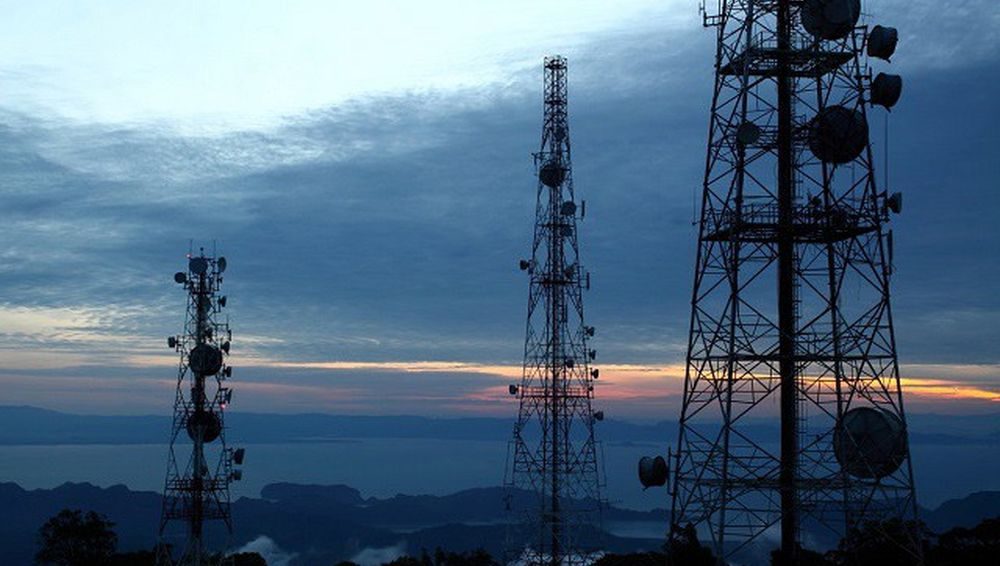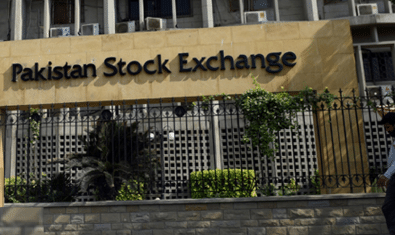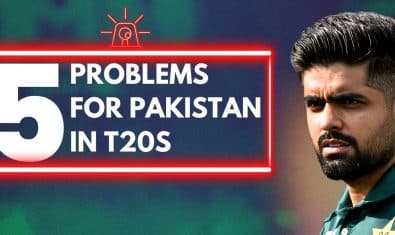by Syed Wajid Ali
To increase certainty and incentives for investment, licenses should come with an expectancy of renewal, meaning that the licensee can generally expect to have its license renewed unless it has failed to meet regulatory or license requirements, or where the band may be subject to reallocation.
The renewal process should be clearly specified, either in the regulations or as part of the license’s terms and conditions, and should be completed at least a year before the expiration of the license. Renewal expectancy is critical to give licensees and investors’ confidence that they will be able to recoup their investments in equipment and infrastructure.
If there is no reasonable expectation of renewal, as a licensee gets closer to the expiration of the license, they have less incentive to invest in further deployment or upgrades to existing equipment fearing that they will not be able to get all their money back before the license expires. As a result, users suffer from potentially declining levels of service.
ALSO READ
Establishing International Competition Rules to Boost Pakistan’s Telecom Sector [Analysis]
The 15 year licenses of three mobile operators in Pakistan; Telenor, CMPak and Warid Telecom are due to expire in 2019. The remaining two mobile operators, Jazz (Mobilink) and Ufone are not due for renewal until 2022 and 2029 respectively. Detail of Cellular Mobile licensees along with issuance, renewal and expiry dates are given below:
| Licensee Name | License No. | Issuance date | Spectrum | Renewed date | Expiry date | |
| 900 MHz | 1800 MHz | |||||
| CMPak Limited | CMT-03/LL&M/PTA/2004 | 19-Apr-90 | 7.6 MHz | 6 MHz | 23-Oct-04 | 22-Oct-19 |
| Telenor Pakistan | MCT-01/RBS/PTA/2004 | 26-May-04 | 4.8 MHz | 8.8 MHz | – | 25-May-19 |
| Warid Telecom | MCT-02/RBS/PTA/2004 | 26-May-04 | 4.8 MHz | 8.8 MHz | – | 25-May-19 |
| Pakistan Mobile Company Limited | MCT05/WLL&M/PTA/2007 | Jul-92 | 7.6. MHz | 6 MHz | 06-Jul-07 | 5th July 2022 |
| Pakistan Telecom Mobile Limited | MCT06/WLL&M/PTA/2014 | Aug-98 | 7.6. MHz | 6 MHz | 08-Apr-14 | 07-Apr-29 |
Warid, CMPak Limited and Telenor Pakistan, under license clause 1.2.2 approached PTA, for renewal of license. Warid and CMPak have given consents without any condition; however, Telenor has proposed a few changes in license renewal process including Terms & Payment issues etc.
Telecom Policy – 2015 on License Renewal
Clause 8.11 of Telecommunications Policy 2015 reproduced below states that:
8.11.1 “Renewal of license and associated spectrum at the end of a license period will be as per the policy of the Government. PTA will in timely manner initiate the process in accordance with terms and conditions of the license”
8.11.2 “In case the renewal of licenses, PTA will make recommendations to Federal Government (MoIT) within the timelines stipulated in the respective licenses”
8.11.3 “Other spectrum not subject to license renewal terms will be priced in accordance with the applicable spectrum pricing methods specified in Section 8.7”
8.11.4 “Where spectrum payments for microwave and mobile spectrum have been introduced subsequent to the initial assignment of mobile spectrum, the spectrum fees associated with the mobile spectrum will be determined under the terms of the applicable license. Any microwave spectrum will then be charged using the AIP method in place.”
Renewal Options with GoP and PTA:
In view of the above and Telecommunications Policy 2015 clause 8.11, following options are available to the GoP and the PTA.
- Rationalization of Spectrum: Licenses of Warid Telecom, Telenor Pakistan and CMPak Limited will expire in 2019, however, the policy may also be applicable on PMCL (Mobilink) and PTML (Ufone), whose licenses will expire in 2022 and 2029 respectively because of the segregation of the Operational & Spectrum Licenses. It is also pertinent to mention here that CMPak has been experiencing persistent interference in their uplink GSM 900 MHz band due to cross-border spillover from Indian CDMA operators. FAB has temporarily assigned compensation band to CMPak in lieu of 900 MHz band. Under this situation, the spectrum holdings in 900 MHz and 1800 MHz band have to be rationalized for proper carrier planning. PTA might consider reallocation of spectrum to all the CMOs in multiples of 5 MHz in both the bands. Detail of existing and proposed spectrum will be as under:
| Operator | Existing Spectrum | Proposed Spectrum | ||
| 900 MHz | 1800 MHz | 900 MHz | 1800 MHz | |
| Jazz (Mobilink+Warid) | 2×12.4 | 2X14.8 | 2×10 (-2.4) | 2×15 (+0.2) |
| Telenor | 2X4.8 | 2X8.8 | 2×5 (+0.2) | 2×10 (+0.2) |
| Ufone | 2X7.6 | 2X6 | 2×5 (-2.6) | 2×5 (-1) |
| Zong | 2X7.6 | 2X16 | 2×5 (-2.6) | 2×15 (-1) |
| Total | 32.4 | 45.6 | 25 | 45 |
Following will be the outcome of this option:-
- 10 MHz spectrum from 880.1 to 890 MHz (Under severe interference from Indian 850 MHz band), out of which presently 7.6 MHzs allocated to Zong will be kept free till resolution of this interference issue and Zong may be shifted upward.
- CMOs will be accomodated within the total spectrum 25 MHz in 900 MHz band from 890.1 to 915 MHz for the Uplink (UL) and 935.1 to 960 MHz for the downlink (DL) instead of existing 4 MHz.
- PTA/FAB will have 10 MHz spectrum in 900 band at their disposal for auction at a later stage.
- Telenor is the only gainer in this case whereas Ufone and Zong will have to surrender the maximum spectrum in both 900 and 1800 MHz band. Jazz is going to lose 2.4 MHz in 900 MHz band and gain only 0.2 Mhz in 1800 MHz band.
- From the regulatory perspective, a regulator can reassign/change the spectrum vide licensing clause 5.3 of CMOs, which reads as under:
- Spectrum Pricing: In case spectrum holdings are rationalized, renewal price may also be adjusted accordingly. Applicable spectrum fees may be set by the government only through public consultation and generally should be limited to the amounts necessary to support government management and enforcement actions. There is a wide range of fees and how they are calculated varying from country to country. When fixing the relative spectrum price for renewal, it is important to adjust for the variation in propagation properties between spectrum bands. In our case, it is recommended to be the wavelength. As illustrated in the table below, these variations can be adjusted by placing weights on each spectrum band. In this scenario the reference price of 700 MHZ band has to be selected may be through benchmarking of the price of this band against comparable countries or some other criterion known to everyone in advance.
| Spectrum Band | Weightage | Pricing Example US $ (M) per 10 MHz for 15 years |
| 700 | 1 | 395 (Reference Value) |
| 850 | 0.823529 | 325 |
| 900 | 0.777778 | 307 |
| 1400 | 0.500000 | 198 |
| 1800 | 0.388889 | 154 |
| 2100 | 0.333333 | 132 |
| 2600 | 0.269231 | 106 |
| 3500 | 0.200000 | 79 |
- Pricing of Spectrum Usage Fee: Best practice in spectrum pricing usually incorporates a spectrum access fee and ongoing spectrum usage fees. The spectrum usage fees should be determined and publicized in advance of setting the spectrum access fee as operators will need to incorporate the level of spectrum usage fees into their valuations before assessing spectrum access fees. Usage Fee or the Annual Spectrum Administration Fee should aim to only cover the administration costs of managing spectrum. Proposed IAP is not acceptable as it seems to be a revenue generation exercise.
- Defragmentation of Spectrum: In order to achieve the spectral efficiencies existing spectrum may be reshuffled to make it contiguous for all the CMOs. This is imperative after the Mobilink – Warid Merger, where their spectrum is fragmented at different places and cannot be utilized efficiently.
- Tenure of the spectrum licenses: Tenure may be adjusted in a way so that as soon as an ecosystem of efficient spectrum sharing techniques like Dynamic Spectrum Sharing are in-field, we can immediately shift on to those techniques for optimal utilization of this scarce resource.
- Assigning the License to Secondary Market: The possibility of assigning the license for spectrum use within the framework of a secondary market is relevant in the renewal of these previously assigned licenses. It allows new players to enter the market and does not limit it exclusively to incumbent operators that originally received licenses, while ensuring efficiency in spectrum use. Therefore, an operator with an excess of a certain band, whether or not subject to renewal, can lease their spectrum to a third party that will guarantee its use. A secondary market allows operators to obtain licenses for use of the spectrum from other operators that already have licenses from the Regulator. This secondary market maximizes efficient spectrum use since it allows the transfer of licenses from an operator with less interest to one that will put it to greater and better use. In all transfers of licenses, the terms and conditions under which the original licensee obtained the license must remain.
- Technology/Service Neutrality: Spectrum should be awarded on the basis of full technology/Service Neutrality to enable the licensees to provide state of the art technologies and services to their customers without wasting time in getting regulatory approvals. To achieve this objective Service License may be separated from the spectrum.
- Reduction in Regulatory Fees: CMOs are paying 2.5% of adjusted revenues as part of contributions to the USF fund, ICT R&D fund, and license administration fee obligations in addition to the 75% of FAB’s Budget as Annual Spectrum Administration Fee. In view of the substantial increase in Tele-density and growth of the telecom sector since 2004, this payment to PTA has risen to thousands of millions of Rupees annually. It is recommended that these fees should be revised and reduced to the amounts necessary to support government management and enforcement actions.
- Public Consultation: Last but not the least, engaging in public consultation is an important practice for regulators, especially in the licensing process. Consultation with stakeholders reinforces the perception of a transparent process and allows the regulator to learn the views of the proposed initiative directly from consumers, existing operators, and other interested parties. Consultation also promotes the fine-tuning of proposed initiatives.
Conclusion
Although not exhaustively, this note has provided an overview of renewal issues in Pakistan and how these issues may be addressed in their regulatory regime. As technology evolves and convergence and technologically/Service neutral approaches gain importance, it is important to closely monitor developments and be prepared to adapt and evolve the regulatory frameworks that govern licensing procedures and licensing renewal in particular.





















